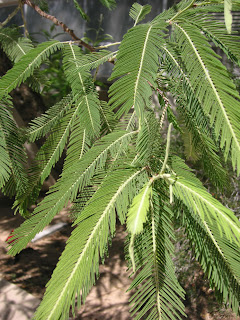
So. I was talking to my friend, who is a landscape architect. He tells me my previous post was really about an Indian Fig. I still claim it's a Bottle tree. My pride is as solid as oak. My knowledge is like a sapling.
Today's post is motivated by the recent display of yellow fireworks permanently positioned on our Tucson streets for a couple weeks this month. The Palo Verde. Translated from Spanish it means green tree, which is funny because their is a blue palo verde. And amazingly it holds true to its name.
There are some great varieties of this the "Cercidium" genus. The ones posted here, I believe, are Desert Museum Palo Verdes. A museum apparently has a genetic patent on the specie. It's a great cross. History records that a Mark Dimmitt in the 1970's, working for the museum, noticed a specie that was hardy, thornless, and grand. He isolated the specie and allowed it to pollinate its own kind only. Later genetic tests would show the Desert Museum Palo Verde to be a hybrid of the blue, Mexican and Foothill Palo Verde. Dimmitt, a modern day Mendel.
Other varieties include the Little-leaf palo verde and Mesa palo verde. Their fruit has been consumed by Seri, a northern Mexico Native American tribe, for centuries. They used to eat, grind into flour, and boil it with meat. The tree is a part of the Leguminosae family. In portuguese, vegetables are legumes, which makes sense as to why the pod is edible. (I love when I can link life with Latin)
The Palo Verde is also our state tree! They make poor sling shots (bendable). And they help raise saguaro cactus. Their shade and their litter of beans, leaves, and flowers provide protection and nutrients for saguaro cactus. So while out for a stroll in the great Sonoran Desert, see how many saguaro you see shooting up near a Palo Verde.




